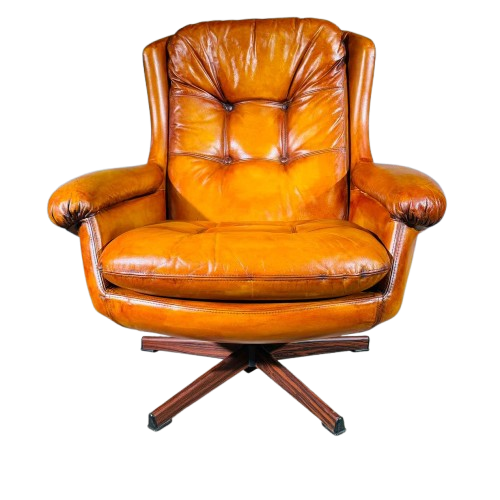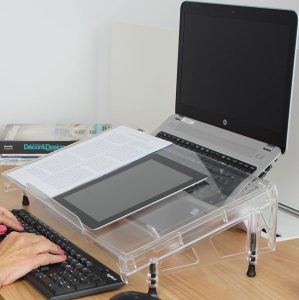
Why a fully adjustable office chair is important
We are all different, so when you buy a new office chair, look for one that has all the adjustability features.
Because there are so many leather office chairs for sale in South Africa, it is important to consider the different types of leather available, and also the common misconception surrounding the term ‘genuine leather’. For some customers, “leather is leather”, but this is not the case as there are huge differences between the different types of leather used for home and office furniture, and chairs in particular. Broadly speaking, office and casino chairs can be upholstered in leather, bonded leather or faux leather, and each variant is quite different from the next.
Whether you’re looking for a luxurious, high-end feel or a cost-effective, easy-to-maintain option, understanding the different types of leather can help you make an informed decision. In this guide, you’ll learn about the various grades of natural leather, as well as artificial leather options like bonded leather and vinyl.
Genuine leather is a natural product that comes directly from an animal hide.
Bonded leather and faux leather are synthetic, or artificial products that are made to look like genuine leather.
DEFINITION:
We define leather that comes from an animal hide as “genuine leather”, and we only use cowhide to upholster our office and casino chairs.
Leather consists of layers or grades known as Full or Natural Grain, Top Corrected Grain and Split Grain Leather. Because it is a natural product, when you run your fingers across leather it will not feel perfectly smooth. If you press your finger into the leather, the surface will stretch and wrinkle, just like your skin.
Leather has a unique and inherent smell that cannot be imitated. Think of the beautiful smell of a new car with leather upholstery!
The outer layer of leather is the strongest. As you go lower, leather loses its density. The lower layers are used to make the softer versions of leather such as suede.
Unfortunately, when it comes to leather, many people are not familiar with such terms as full, natural, top or corrected grain. Instead they simply look for the words genuine leather.

Full or natural grain leather is the highest quality of all types of leather and also the most expensive. It is the top layer of the hide and includes the full thickness of the natural grain. With full grain leather, you can see the pattern of the skin and marks and scars from the animal’s life. It is not sanded or buffed to remove these marks or imperfections. As the natural grain contains the strongest fibers in the hide, full grain leather is the strongest and most durable of all leathers. It also retains its original breathability and is weatherproof and damage-resistant.
As full grain leather ages, rather than wearing out, it burnishes and develops a colour change or patina. The patina is a soft sheen that develops on the surface of the leather and it only occurs on full grain leather. This adds a unique character to the leather….the more you use it, the better it looks and feels.
Patina only occurs on full grain natural leather.
Because the natural grain has no artificial protective coating, it is susceptible to staining and is difficult to clean. Any liquid spillage will be absorbed into the leather and the resultant stain (if there is one), cannot be removed.
Despite the fact that full grain leather is the best quality and most expensive, some consumers regarded it as inferior due to the visible marks and scars on its surface. Natural grain leather is used to upholster high-end furniture like sofas, and is seldom used on ergonomic office chairs.


Full or natural grain leather is the highest grade and most expensive of all types of leather.
Top grain corrected leather is the second-highest grade of all types of leather.
Top grain corrected leather is the second-highest quality and is the type most commonly used in high-end genuine leather products and leather office chairs. With top grain leather, the top of the hide is sanded or split off which removes the imperfections and marks on the surface. By removing the top portion of the hide, top grain leather loses some of its strongest fibers and as a result, it is not as strong and durable as full grain leather. It is however, more affordable.
After sanding away the marks and imperfections, top grain leather is imprinted or embossed with a fake grain to give it a uniform look. The leather is then pigmented and finished off with a clear protective layer. This protective layer prevents corrected leather from developing a natural patina like full grain leather, instead it will just get scuffed. The finishing coat reduces the breathability of the leather, but it provides protection against stains that would otherwise sink into full grain leather. Corrected leather is therefore much easier to clean.
Corrected leather is highly suitable for those applications where “uniformity, durability and stain resistance is important”. As a result, it is often used for home and office furniture, as well as casino chairs in South Africa.

DEFINITION:
Correction of leather means removing the intrinsic marks and imperfections in the hide by sanding or buffing. The sanded layer is then imprinted with an artificial grain to make it uniform.Leather that has been modified in this way is called corrected grain leather.
Split grain leather is the third split or segment of the animal hide. It is the weakest portion of the hide and requires chemical treatment to improve it’s strength and durability. It is more altered or corrected than top grain leather, and the chemical treatment ensures that it is not as soft and supple.
Although split leather is better than artificial or faux leather, it is certainly not the best leather you can get. It is also the least expensive. As a result, split grain leather is often used for less expensive furniture or on the parts of furniture that experience less heavy use, such as the sides and backs of sofas, or the outside backs of office chairs.
DEFINITION:
Bonded leather is the chipboard or particle board of leathers.
If you enjoy the appearance and feel of leather but not the price tag, then bonded or reconstituted leather is the way to go. Bonded leather is a synthetic leather manufactured from left over scraps of leather which are made into a pulp and mixed with bonding materials. It is then attached to a fibre cloth or paper backed sheet, dyed, embossed with leather like textures, and coated with polyurethane to give it a glossy look and feel of leather.
Durability, smell, and texture depend on the degree of organic leather in the chemical mix, which can vary anywhere from 10% to 90%. Bonded leather office chairs are available for sale in South Africa and can look very nice. However, they cannot be compared to grain leathers in terms of quality and durability.

Bonded leather is mainly used to produce budget friendly furniture and office chairs where aesthetics and low cost are important.
Over time, bonded leather may peel and flake, whereas real leather cracks and fades, but does not peel.
DEFINITION:
Faux leather is a synthetic leather also referred to as imitation or artificial leather.
Faux leather primarily falls into two categories, namely Polyvinylchloride (PVC) commonly known as Vinyl, and Polyurethane (PU). Both these synthetic leathers are manufactured for similar furniture applications, but they differ in a number of ways. Classic Executive Chairs with both types of faux leather are available for sale in South Africa. What is Faux Leather?
Vinyl (PVC) is made from two synthetic materials. The fibres of the upholstery are made from strong polyester fibres that are coated with polyvinylchloride (PVC) and plasticizers (phthalic acid). The PVC is melted onto the surface of the fibers, sealing them closed and making a virtually waterproof surface that is flexible and tough. Vinyl is harder and more durable than PU leather because it has additional layers underneath its coating.
Vinyl upholstery is easy to clean and maintain, and is typically used where cleanliness is a top priority. Common examples are hospitals, restaurants, laboratories and factories. Vinyl can become uncomfortably hot if left in the sun and your skin can stick to its surface. Vinyl may also crack with extended use, especially if it is cleaned with alcohol-based solvents. Such cleaning agents destroy the plasticisers and make the vinyl hard and brittle.
PU is made by coating a backing fabric such as cotton or polyester with a flexible polymer and then treating it to look more like an animal hide. PU upholstery looks and feels more like real leather. Because there are no plasticisers used in PU, it doesn’t crack or peel like vinyl, and will remain soft and supple. PU is considered greener than Vinyl because it does not create dioxins. Because it is softer and more pliable than vinyl, PU is easier to work with.
PU is the most realistic imitation of leather as it can wrinkle like leather, and has a leather feel when used on office chairs and other furniture. Of the two types of faux leather, PU is more expensive to produce.
The best leather choice for an office or casino chair depends on factors such as budget, maintenance requirements, durability, and aesthetic preferences:
For luxury and durability: Full-grain or top-grain leather, for example briefcases, bags and belts.
For a balance of cost and quality: Top grain corrected-grain leather, for example casino seating.
For budget-friendly options: Bonded leather, vinyl or PU leather.
Not all leathers are created equal and there are a number of different types available for office and casino chairs. If you are looking for a ‘genuine leather’ office chair for sale in South Africa, it must be one that is upholstered with an animal hide. By understanding the differences between the types of leather as well as the advantages and disadvantages of each, you should be in a better position to make an informed decision as to which is best for your office furniture requirements.
Contact us for more information.

We are all different, so when you buy a new office chair, look for one that has all the adjustability features.

Ergonomic and orthopedic office chairs are very similar. What are the major differences and which is best?

One of the best ergonomic accessories you can get is a document holder.


